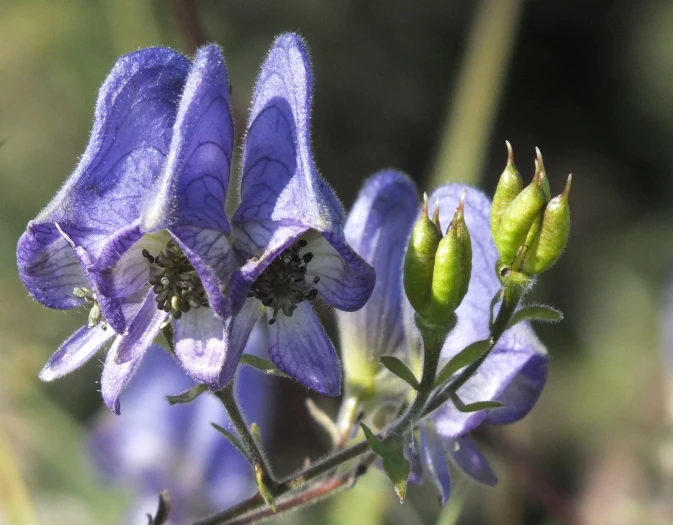Monkshood
(Aconitum volubile)
Monkshood (Aconitum volubile)
/
/

Татьяна Фирсова
Public Domain
Image By:
Татьяна Фирсова
Recorded By:
Copyright:
Public Domain
Copyright Notice:
Photo by: Татьяна Фирсова | License Type: Public Domain | License URL: http://creativecommons.org/publicdomain/zero/1.0/ | Rights Holder: Татьяна Фирсова | Publisher: iNaturalist | Date Created: 2017-08-29T16:42:23-07:00 |

































Estimated Native Range
Climate Requirements for Morrisville, North Carolina
| This Plant | Your Site | Plant Suitability for Your Location | ||
|---|---|---|---|---|
| • Precipitation | 10" - 117" | 45" | Aquatic | Aquatic |
| • High Temp. | 55°F - 85°F | 90°F | Your summers may be too hot for this plant. | Too hot |
| • Low Temp. | -34°F - 37°F | 29°F | Your winter temperatures are normal for this plant | Excellent |
This plant may not grow well at your location - your precipitation is too high.
Summary
Aconitum volubile, commonly known as Monkshood, is a deciduous perennial vine native to the forest margins, scrublands, and grassy slopes of East Asia and Siberia. It can climb to heights of 8-12 feet (2.4-3.7 meters) with a spread of 2-3 feet (0.6-0.9 meters). Monkshood is characterized by its twining stems and deeply lobed leaves. The plant is renowned for its hooded blue and purple flowers, which bloom in summer and fall, adding a touch of vibrant color to the garden. The flowers are particularly showy and can be a striking addition to a floral display.
Monkshood is valued for its vertical growth habit and the dramatic color it brings to gardens. It is often used to cover trellises, arbors, and fences, or as a backdrop in perennial borders. This plant prefers moist, well-drained soils and can tolerate a range of light conditions from full sun to part shade. While it is relatively easy to maintain, gardeners should be aware that all parts of the plant are highly toxic if ingested. Protective gloves should be worn when handling Monkshood to prevent skin irritation. It is also susceptible to powdery mildew and should be monitored for this and other fungal diseases. Despite its toxicity, Aconitum volubile has been used historically in traditional medicine, though extreme caution is advised due to its poisonous nature.CC BY-SA 4.0
Monkshood is valued for its vertical growth habit and the dramatic color it brings to gardens. It is often used to cover trellises, arbors, and fences, or as a backdrop in perennial borders. This plant prefers moist, well-drained soils and can tolerate a range of light conditions from full sun to part shade. While it is relatively easy to maintain, gardeners should be aware that all parts of the plant are highly toxic if ingested. Protective gloves should be worn when handling Monkshood to prevent skin irritation. It is also susceptible to powdery mildew and should be monitored for this and other fungal diseases. Despite its toxicity, Aconitum volubile has been used historically in traditional medicine, though extreme caution is advised due to its poisonous nature.CC BY-SA 4.0
Plant Description
- Plant Type: Vine
- Height: 8-12 feet
- Width: 1.5-3 feet
- Growth Rate: Moderate
- Flower Color: Blue, Purple
- Flowering Season: Summer, Fall
- Leaf Retention: Deciduous
Growth Requirements
- Sun: Full Sun, Part Shade
- Water: Medium
- Drainage: Slow, Medium, Fast
Common Uses
Bee Garden, Bird Garden, Butterfly Garden, Deer Resistant, Hummingbird Garden, Rabbit Resistant, Salt Tolerant, Showy Flowers, Water Garden
Natural Habitat
Forest margins, scrublands, and grassy slopes of East Asia and Siberia
Other Names
Common Names:
Scientific Names: Aconitum volubile, Aconitum phragmitincola, Aconitum recognitum
GBIF Accepted Name: Aconitum volubile Pall.